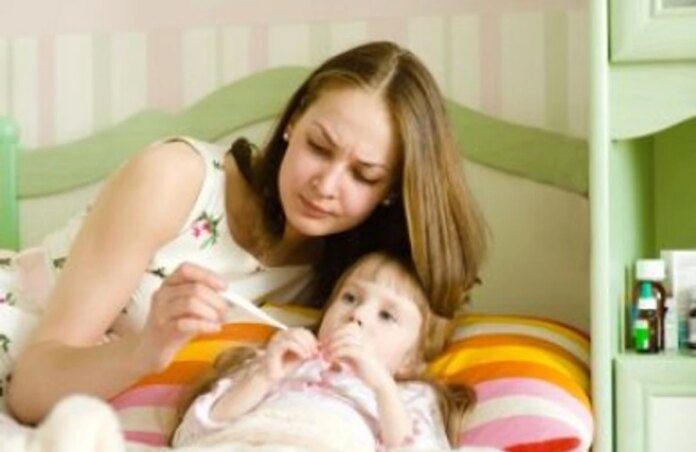
A frequent infection in young children, but also in schoolchildren, foot-and-mouth disease is sometimes diagnosed as simply red throat, herpangina, tonsillitis or chicken pox, because, in some cases, in the first two days it is manifested only by fever and red in the throat.
Then, red spots appear around the mouth, on the tongue and in the roof of the mouth, on the palms and soles, between the fingers, less often in the area of the lower abdomen. Unlike chicken pox, these spots, which turn into blisters 2-3 days after they appear, do not itch and leave no marks, but are extremely painful. For this reason, it is difficult for the child to eat, rarely even to drink, leading to dehydration.
Why does it appear?
The cause of the little one’s suffering is the Coxsackie A16 virus, which belongs to the enteroviruses, easily transmitted from a sick person to a healthy child both orally, through sneezing, coughing, and by touching contaminated objects through nasal secretions, saliva, feces.
Once inside the body, the virus multiplies in the intestine. After an incubation period of up to a week, the first symptoms appear: fever, pain and redness in the throat, headaches, general malaise, irritability, loss of appetite, as well as rashes on the skin that evolve into blisters with liquid, painful and stinging after suppuration.
They dry up and disappear in about a week after they appear. From that moment, the child can be taken out for a walk, because it is no longer contagious. However, it is good to avoid crowded areas and parks, because he still has a low immunity.
Hand-foot-mouth disease is a viral infection, therefore antibiotic treatment is not indicated unless the lesions caused by the disease become superinfected. Isolation at home is recommended, as it is a contagious disease. Syrups with paracetamol and ibuprofen are also administered to combat fever.
The pain is alleviated with the help of an anti-inflammatory spray and oral gels or solutions based on glycerin, stamycin, anesthesin or lidocaine. The child should not be forced to eat, but the best possible hydration is needed.
Yogurt, milk, water and tea at room temperature should not be missing from the diet in the first days, being followed by pureed food, offered in small quantities. Acidic foods and juices, such as orange juice, which irritate mouth lesions, are to be avoided.
The younger the child, the greater the risk of rapid dehydration due to painful blisters in the mouth that prevent him from feeding.
If he refuses to drink any liquids, has dry skin and lips, dark urine, cold hands and feet, go to a pediatric hospital immediately for IV fluids.
In addition, hand-foot-mouth disease can rarely lead to heart (myocarditis, pericarditis) or nervous system (encephalitis, meningitis) complications, manifested by visual disturbances, abdominal pain, lethargy or fainting, difficulty breathing at slightest exertion, convulsions. These symptoms require urgent presentation to a doctor.
The virus that triggers foot-and-mouth disease remains active longer on the objects with which the patients come into contact, therefore, in order to avoid the spread of the disease, it is required:
– daily airing of the rooms;
– washing hands as often as possible, especially before meals, after coming home, after changing diapers, in the case of adults who have not contracted the disease;
– frequent disinfection of toys, floors, bathroom and kitchen surfaces;
– reservation of hygiene items and tableware for each child individually, at home and in the community.
Hand-foot-mouth disease is a contagious disease that occurs mainly in children under 10 years of age, but most frequently under the age of 5. Adults generally have immunity, because in their past they had this disease, which leaves antibodies. However, it can also occur, sporadically, in adolescents or adults who have not had it and have no immunity to this infection.






































